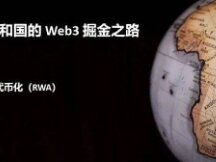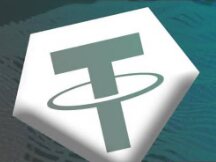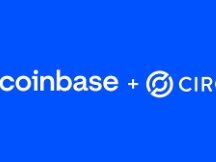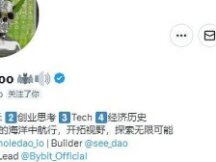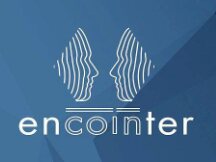Coindesk: Web 3 is a long battle worth fighting for.
With all the gossip and controversy surrounding the web 3 months ago, the concept of 3rd gen, in the increasingly influential age of the internet, can be considered totally new.
In fact, over the past 20 years, there has been much discussion about the social, cultural and political impact of the dominance of Internet giants such as Google and Facebook, and its negative impact of business-driven on Web 2.0 data. "Web 3.0" was part of this discussion. The concept of Web 3.0 predates Web 3, the latest crypto-based iteration, a concept pioneered in a blog post by Ethereum and Polkadot co-founder Gavin Wood in 2014, and Coindesk published the article incident last week.
In a contentious argument, both sides have their own opinions. Chris Dixon's work is that the Web 3 project creates real value, while Jack Dorsey's debate argues that time is just a buzzword used by venture capitalists to increase their legitimacy and their symbolic capital.
Smart people, including two well-known "Tims" (mentioned below), mark the end of Web 2.0, suggest that the Web 3 project is worth the effort and that if Web 3 succeeds and succeeds in the return of business, it will benefit the public. have been researching for a long time.
On the other hand, this long history reminds us that big solutions are difficult and that investors can take big deals with a lot of salt.
To put these thoughts aside, it is important to remember the following:Basic Architecture Issues in Web 2.0, why these questions need to change. In doing so, it highlights key issues that urgently need to be addressed in Web 3.The difference between the interests of the big companies that dominate the Internet and the public interest.
Blockchain technology can help solve this problem, but it is not part of the solution and it is not the most important thing. We need a combination of technology, governance and centralization to achieve a business model that combines private and public competition.
But first, to know how we got here, we have to go back to the long history of Web 3.
Web 3 means "not Web 2.0".
Conceptually, Web 3 is inextricably linked to the idea that "organizations must get rid of Web 2.0 and its monopoly problems". For a long time, Web 3 has been defined as "the next generation of Web 2.0".
Sir Tim Berners-Lee describes the implications of the 2006 update. The Web then coined the term "Web 3.0" to describe his vision of the "Semantic Web". Berners-Lee believes that the development of differentiated data and intelligence will make true "machine-to-machine" communication possible by eliminating the needs of middle-class third-party users.
It's not clear if Berners-Lee ever spelled the word "Web 3.0". (Quoting a 2006 New York Times article linked to O'Reilly's quote, the legendary computer scientist said, "People keep asking what Web 3.0 is.") If OReilly had invented the term "Web 2.0" itself, that would have been a bit of a stretch. met on the idea in 2004 and described it in a general article in 2005.
As we all know, in 2004, Google, Facebook and Amazon (the survivors of the dotcom bubble of the late 90s) built enormous marketing power around their thriving communities. . What OReilly does is name a new network-impacting business model that they can dominate. Expand the user base on a platform and the growth of the platform will continue to attract more users. Create a honeypot that attracts advertisers. The emergence of this powerful medium is very different from the original concept of Internet decentralization, in which advertisers and user data should be able to access each other directly without permission.
Most people don't immediately realize that the system is no good for humans, and the basis of the success of these platforms is that they can collect data that has never been used by users and package it to sell them to advertisers and other information buyers. . As “surveillance” capitalism.
People don't think we can rely on these few platforms to manage all of our data. Fewer people think that when we let go of our eyes and fingers we will be seen, locked up in the media and unknowingly controlled by propaganda and disinformation.
This is what I call a distorted industrial model. A model in which the production helps the owner of the production more than the consumer it has to supply. It's a very different way for the community to post information, and it's also a pressing issue that needs to be addressed in the future.
'Web 3.0' became Web 3
By the time Gavin Wood's 2014 article broke, our confusion was becoming clearer and a new way of watching it unfold.
By now, proponents of blockchain technology have shown that blockchain is not just a way to solve internet problems, but also a new way to define those problems. At the time, Ethereum co-founder Wood focused on the blockchain-centric concept of "belief" while deviating from standard business theory (distribution's inability to open doors towards the middle monopoly) and pushing her into the meta. -The problem with Web 2.0: Distrust of decentralized communities has led people to elect a central organization to cooperate in exchanging money and sensitive information. What is one of banking and money can now be seen in another valuable asset: trading information.
The next step is to think that a blockchain like Ethereum would change the trust of middle-class organizations like Google, providing a "real" way to follow the market by opening process and co-working evidence. It has been argued that if we can do that, we can replace platform members with file sharing communities. New business models have emerged through apps that support communities' financial and information exchange, but the idea of "sovereign sovereignty" releasing autonomous information remains important in everyone's hands. users.
Wood was so focused on these ideas that after leaving Ethereum, he devoted his work at Parity Labs to the larger goal of internet therapy. We completed Web 3.0 for Web 3 when we acquired the Web3 Foundation in 2017.
bridge construction
Four years later, Web 3 was almost a fake and associated with crypto products such as non-fungible tokens (NFTs). Did you achieve these goals?
The questions are still open. On the other hand, read Twitter comments such as former Twitter CEO Jack Dorsey claiming that the Web 3 industry is more of a venture capital advantage than a real business. Meanwhile, check out the negative response from Balaji Srinivasan et al, who said Ethereum doesn't think 'smart promises' are the best way for Twitter users to trust the 'community engagement' platform. energy".
Or, by Signal founder Moxie Marlinspike (real name: Matthew Rosenfeld), who argues that Web 3 is harder to implement than crypto cheerleaders think due to cost and hassle. related to its operation. Your own web server still keeps people going. look at the blog post. Convenient access to a more efficient centralized platform. This leads former Bitcoin Core developer Mike Hearn to refer to Bitcoin's Simplified Payment Verification (SPV) wallet as an example of user management software that can process data while managing integrity and not relying not on intermediate servers.
All possible content is valid. One thing is certain. We still have a long way to go before we can get out of the Matrix's grip. Blockchain model "skepticism" changes can be part of the solution, and can come from Decentralized Autonomous Organizations (DAOs) where the power of integration can overcome network disruptions at the intersection of centralized platforms .
But more work is needed. As OReilly pointed out in a recent article, for Web 3 to become “optimistic” and become “the universal religion of trust, it must create relationships with the real world, the law, and commerce.
Fortunately, people build bridges like this. The request will require you to do so. Meanwhile, large media companies run by lawyers may want to establish this standardization process if they want to enter the NFT and metaverse market. However, from OReilly's point of view, blockchain and encryption are not the solution. There are many other important factors.
Let's not forget the old goal. For all individuals, we need to find a way out of the Web 2.0 quagmire. Works great, Web 3 Builder.

Scan QR code with WeChat
